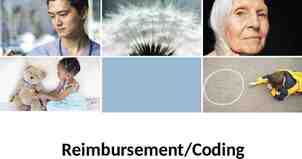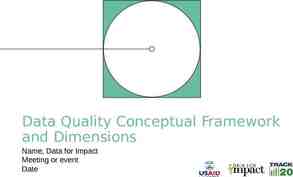Non-Conventional Success Triggers + NCBOs = College Ready Students
50 Slides5.63 MB

Non-Conventional Success Triggers NCBOs College Ready Students Jenny Shotwell Ellen Falkenstein

NCBO Program Two courses –DSMA 0399 –DSMA 0393 / MATH 1414 http://www.ctcd.edu/ncbo

DSMA 0399 -- NCBO Developmental Mathematics Students can complete up to three levels of Developmental Mathematics -Pre-Algebra, Beginning Algebra, and Intermediate Algebra. Students are provided with the opportunity to master the concepts needed to proceed to the next developmental/college course by working at their own pace in their own learning style.

DSMA 0399 – Physical Set Up of Class Students work in computer lab Monday thru Thursday for 1 hour and 20 minutes per day. Class times are set; however, some flexibility is allowed. Two instructors are available during class time. Other times the lab is staffed by TA and tutor. Mandatory workshops are held once a month on Fridays -- topics include Learning Styles/Personality Workshop by CTC Mental Health Department, Presentation by CTC Business Team ENACTUS, etc.

Flowchart for DSMA 0399

Instruction Contract Samples

DSMA 0393/MATH1414 -- NCBO Intermediate Algebra/College Algebra Students can complete College Algebra with Intermediate Algebra taught in a Just-In-Time format. The curriculum, rigor, quizzes/tests coincide with the CTC Math Department's requirements.

DSMA 0393/MATH1414 Physical Setup of Classroom Students attend class four days a week for 1 hour and 20 minutes per day. Students are also required to spend two hours a week in the computer lab with a TA and tutor(s). Instructors team teach; therefore, one instructor is always available during class time to help individual students.

DSMA 0393/MATH1414 Physical Setup of Classroom Lectures are recorded on Mimio equipment; and, pdf files are posted on MyLabsPlus for review by all students. We can see who accessed the files and number of downloads. Mandatory workshops are also required for this course.

Why Does It Work? www.hsa.ie

Why Does It Work? Application/Interview Process. – Students aware of expectations and course work load. Sign an Instructional Contract if allowed to enroll. - Proof understand commitment. With the NCBO program, the student can get individualized help if needed. – The program stresses that the students must find the way that "works for their brain."

Put Responsibility on Student Based on individual learning styles, students determine which available resources will allow them to be successful. – Mandatory workshop with licensed social worker over survey results. Faculty member serves as a mentor and ‘cheerleader’ pushing the student to succeed. - This philosophy handles the disconnect often found between faculty/student expectations.

Team Approach During class time, two instructors are available to students. The lab has a full-time TA with instructor credentials and a parttime tutor. – Expanding to 2 tutors. The team works well together and shares the common goal of pursuing student confidence, responsibility, and success.

Team Approach The students benefit from different explanations/techniques to solve the same problem. - The current team has four Mathematicians, an Engineer, and a Scientist for instructors. The team uses compassion, tough love, laughter, and sarcasm to allow students to feel at ease in the class/lab. – This strategy leads to increase of student enthusiasm and confidence.

Community Environment The lab houses students from Pre-Algebra to College Algebra -- students are at all different levels within each class. - Students continue to attend to get assistance in other classes even some that are not mathematics. The team does not allow judging, condescending remarks/sounds, or negativity amongst peers. The personality of the team sets a standard and leads by example right from the start. "We love Math" is the mantra. - This program begins to break down the walls of intimidation around faculty.

Community Environment (Cohen and Brawer, 1987) "A community college student is an at risk student facing insurmountable barriers to academic success. Potential impediments to degree completion may include being a first-generation college student, having poor academic skills, being burdened by family and work pressures, and lacking a consistent connection to the college."

Integration of Lab Research The National Study of Developmental Education found that programs integrating classrooms and labs had significantly higher pass rates in developmental education (Boylan, Bonham, Claxton, and Bliss, 1992). Integration does not constitute providing labs to classroom students; but, rather concerns a target effort to link the classroom to the lab and vice versa. These efforts include directly related activities, instructors dedicating time to the lab, required time in the lab for students, close proximity of the lab and classroom. (Boylan, 2002). The TAD program includes all of these attributes while concentrating on target, accelerated mastery of developmental concepts.

Engages/Enhances Interest in Math with Relevance www.animations.physics.unsw.edu.au hs-mathematics.wikispaces.com bridges-2013.blogspot.com

DSMA 0399 Data Data Time frame: Spr13 – Sum14 DSMA 0399 Number of students 252 Complete 0 levels 29 (incl. drop/withdraws) Complete 1 level 72 Complete 2 levels 128 Complete all 3 levels 23 59.9% complete multiple levels.

College Algebra Pass Rates 0399 to 1414 0393 to 1414 Number of students 102 266 Pass Rate 93.14% 94.74% Withdraw/Drop Rate 3.92% 2.26% ** 89 DSMA 0399 students also completed DSMA 0393/MATH 1414.

Traditional Course Pass Rate DSMA 0300 DSMA 0301 DSMA 0303 Pass Rate 41% 48% 36.5% Withdraw/Drop Rate 31 % 24.5 % 39% ** Data collected from Fall 2013 – Spring 2014 Only 5 students completed DSMA 0300 through MATH 1414 in the Spring 2013 to Summer 2014 time frame. Four of those students were successful. - We are researching why we lose students in the sequence and how students jump around in the sequence. This is out of 495 students that took 0300 in Spring/Summer 2014.

Test Scores Vs. Levels Completed Total Placement Based On TSI Tests Developmental Levels Completed Completed College Algebra 1 2 3 0 Drop Passed C or Drop Enrolled Pre-Algebra 212 59 109 19 2 24 94 4 16 Beginning Algebra 26 7 13 3 0 3 7 2 2 Intermediate Algebra 2 - 1 1 - - 1 - - College Algebra 1 - 1 - - - - - - TSI Exempt 11 6 4 - - 1 3 - 1 Test scores do not show student potential, if given opportunities to thrive.

Prior Pre-Algebra Vs. Levels Completed Prior Dev Math in the Total Classroom Developmental Levels Completed 1 2 3 0 Pre-Algebra - 1 105 Semester* 28 55 12 1 Pre-Algebra - 2 Semesters 14 6 4 4 Pre-Algebra - 3 Semesters 4 1 3 Completed College Algebra Drop Passed 9 46 C or Enrolled Drop 1 4 3 * 67 (64%) passed Pre-Algebra in the traditional course prior to NCBO. Data shows lack of retention from previous traditional courses. (Aaron) 8 1

Personality Surveys Students were required to completed short surveys about their communication skills/learning style / personality. Temperament Survey www.humanmetrics.com/cgi-win/jtypes2.asp Left or Right Brained www.web-us.com/BRAIN/braindominance.htm VARK www.vark-learn.com/english/page.asp?p questionnaire Color Communicator http ://freecommunicationquiz.com/free-communication-quiz/

Survey Completions Vs. Levels Completed Developmental Levels Completed Surveys Total Completed College Algebra 1 2 3 0 Drop Passed C or Enrolled Drop Completed Surveys 189 28% 58% 9% 1% 4% 48% 2% 9% No Surveys 63 30% 30% 10% 0% 30% 14% 3% 3% Shows that if they do the work asked, they will be successful, even if the assignment was just the simple task of completing surveys .

Left Brain or Right Brain ?

Left/Right Brained Vs. Levels Completed Developmental Levels Completed Left Brain Versus Total Right Brain Completed College Algebra 1 2 3 0 Drop Passed C or Drop Enrolled Left Brain 141 26% 58% 11% 1% 4% 56% 1% 10% Right Brain 48 33% 56% 2% 2% 6% 25% 4% 6% Further research on where the Right Brains are going? Only 5 students went to other mathematics courses were they right brainers? Five of the six team members are left brained.

Blue and Gold Communicators BLUE COMMUNICATION GOLD COMMUNICATION A Blue's world revolves around people, relationships, and fostering growth in themselves and others. When speaking, they first focus their attention on establishing a relationship or reconnecting with the person. The information they wish to convey is woven into this relationship-building endeavor. Gold’s are generally respectful and responsible. They listen for details so they know what their part is. They usually size up a situation for what would be most appropriate before responding. Friendly, Helpful, Empathetic Optimistic Expressive with Emotion Fostering or Maintaining Harmony May use metaphors to embellish points TIPS FOR COMMUNICATING WITH BLUES Acknowledge Them Show Appreciation Include them Have patience Don't "bark" orders Purposeful, Plans Ahead Respectful, Appropriate Supportive of Policies and Rules Detail Oriented, Chronological Loyal, Devoted TIPS FOR COMMUNICATING WITH GOLDS Be Prepared, Give Details Stay on Target, be Consistent Show Respect Don't Interrupt Recognize Their Contributions

Green and Orange Communicators GREEN COMMUNICATION ORANGE COMMUNICATION Greens for the most part, communicate for the purpose of gaining or sharing information. During a conversation, their attention is usually focused on the matter at hand, not on the relationship. Logical and Objective Generally, Oranges want to share their opinion the minute it hits their mind. Interested in taking action and being expedient, they may skip the softeners and go straight for the "punch-line". Includes Facts and Information Big Picture, Conceptual Questioning, Critiquing Wry Sense of Humor TIPS FOR COMMUNICATING WITH GREENS Allow Them Time to Ponder Skip the "small talk" Avoid Redundancy Give Big Picture or Point first, then fill in details if asked Don't misinterpret their need for info as interrogation Casual, Playful Spontaneous, Now Oriented Fast-Paced, Changes Subjects Quickly Straightforward Active, Involved, Mobile TIPS FOR COMMUNICATING WITH ORANGES Use "Sound Bites" Move with Them While They Multitask Appreciate Their Flair Allow Options and Flexibility Lighten Up

Color Communication Vs. Levels Completed Developmental Levels Completed Color Communication Survey Total Blue Completed College Algebra 1 2 3 0 Drop Passed C or Drop Enrolled 109 25% 60% 9% 2% 5% 53% 2% 10% Gold 22 41% 45% 14% 0% 0% 55% 5% 0% Green 21 24% 62% 10% 0% 5% 38% 0% 14% Orange 37 32% 57% 5% 0% 5% 43% 3% 8% Team: 3 Greens, 2 Blues, and 1 Gold. Program provides opportunity for success for each communication style.

VARK Study Strategies Aural Learner Visual Learner Read your notes aloud. Explain your notes to another auditory learner. Ask others to “hear” you restate the material. Record your notes. Realize that your notes may be incomplete, you may become so involved in listening that you forget to take complete notes. Talk with other students to help fill out your notes. Convert your lecture notes to a visual format. Study the placement of items, colors, and shapes in your text book. Put complex concepts into flow charts or graphs. Use mind or concept mapping in your note taking. Redraw ideas you create from memory.

VARK Study Strategies Read/Write Learner Write your lecture notes out by hand, then type them up when you get home. Use a structured note taking system like Cornell. Put ideas and principles in different words. Translate graphs, and diagrams and charts into text. Read your notes (silently) again and again. Kinesthetic Learner Talk over your notes with another “K” person. Use photos and pictures to make ideas come to life. Go back to the lab, your manual, or your notes that include real examples. Remember that your lecture notes will have real gaps if topics weren’t concrete or relevant to you. Use case studies to help you learn abstract principles.

VARK Results Vs. Levels Completed Developmental Levels Completed VARK Survey Completed College Algebra Total 1 2 3 0 Drop Passed C or Drop Enrolled Visual Learners 9 22% 44% 33% 0% 0% 56% 0% 0% Aural Learners 37 30% 59% 3% 0% 8% 38% 0% 19% Read/Write Learners 54 26% 63% 9% 2% 0% 59% 2% 6% Kinesthetic Learners 57 35% 56% 5% 0% 4% 47% 5% 5% Multi-Modal Learners 32 19% 53% 16% 3% 9% 50% 0% 13% We thought there will be a clearly difference.

Where we get our energy from? Extroverts (E) Vocal Like variety and action Often good at greeting people Like to have people around Often don’t mind the interruption of answering the telephone Have a hard time respecting boundaries Introverts (I) Have a few friends Think, do, think Subtle and reserved, often seen as shy Hate interruptions Like quiet for concentration Have trouble remembering names and faces Work alone contentedly territorial Our team has 2 extroverts and 4 introverts.

How we gather information Sensors (S) Don’t trust an answer that suddenly appears Communicate in a linear fashion Don’t skim when reading Don’t like it when people skim in conversations Sound, accurate, and enjoy repetition Intuitives (N) Interested more in what could happen than in what is happening Communicate like a Christmas tree Trust their intuition Often bored with conversations when there are too many facts Word smiths Our team has 1 sensor and 5 intuitives.

How we make decisions Thinkers (T) Decision based on logic Keep calm in a crisis Impersonal Brief and business like Are often uncomfortable dealing with other peoples feelings Tend to be firm minded May hurt people’s feelings without knowing it Feelers (F) Value sentiment Tend to be very aware of other people and their feelings Enjoy pleasing people Like harmony Dislike telling people unpleasant things Often let decision be influenced by their own or other people’s personal likes and wishes Our team has 3 thinkers and 3 feelers.

How we engage the world Judgers (J) Perceivers (P) Need closure They have rules for themselves and others Consistent Orderly Make plans Hate being late Opinions on things that matter to them Like to keep possibilities open Will come to closure if forced – maybe Spontaneous Open-minded Tolerant Curious Takes pleasure in starting something new, until the newness wears off Our team has 6 judgers.

Temperament Vs. Levels Completed Temperament Total Styles Developmental Levels Completed 1 2 3 0 Completed College Algebra C or Drop Passed Enrolled Drop 3% 50% 2% 8% Introverts 117 26% 60% 10% 1% Extroverts 72 31% 54% 7% 1% 7% 49% 3% 11% Intuitives 80 29% 60% 4% 3% 5% 43% 1% 11% Sensors 109 28% 56% 13% 0% 4% 55% 3% 7% Thinkers 89 35% 49% 10% 2% 3% 47% 3% 7% Feelers 100 22% 65% 8% 0% 5% 52% 1% 11% Judgers 169 27% 58% 9% 1% 4% 51% 2% 8% Perceivers 20 35% 55% 5% 0% 5% 35% 5% 15% Community Learners are more likely to succeed.

Most Common Temperament Results ISTJ The Duty Fulfillers - 38 Strengths Honor their commitments Take their relationship roles very seriously Good listeners Extremely good (albeit conservative) with money Able to take constructive criticism well Able to tolerate conflict situations without emotional upheaval Able to dole out punishment or criticism when called for Weaknesses Tend to believe that they are always right Get involved in “win-lose” conversations Not naturally in-tune with what others feel Their value for structure may seem rigid to others Not likely to give enough praise

Most Common Temperament Results ISFJ The Nurtures - 27 Strengths Warm, friendly and affirming by nature Service-oriented, wanting to please others Good listeners Puts forth a lot of effort to fulfill their duties Take their commitments seriously Good at taking care of practical matters Weaknesses Don’t pay enough attention to their own needs May have difficulty branching out into new territory Extreme dislike of conflict and criticism Unlikely to express their needs, which may cause pent-up frustrations Have difficulty leaving a bad situation and moving on

Most Common Temperament Results INTJ The Scientists - 24 Strengths Not threatened by conflict or criticism Usually self-confident Generally extremely intelligent and capable Take relationships and commitments seriously Good listeners Weaknesses Not naturally in tune with others feelings: May tend to respond to conflict with logic and reason, rather than the desired emotional support Not naturally good at expressing feelings and emotions Tendency to believe that they are always right Tendency to be unwilling or unable to accept blame

What did we learn? Give personality surveys early to be able to advise resources to student. Further research of those students that were not successful. Further research on traditional student population (incl. online) Further research on increasing success for Auditory/Kinesthetic in the DSMA 0399 course.

Student Comments "These classes are neither too demanding, not too easy; they require you to challenge yourself to learn.After about ten years out of college, it was difficult to take a math test or even look at numbers. Now that I've been in this class and with the help of the professors I believe that I have all the tools I need to be successful in the next class." - feedback from student

Student Comments "I have always wanted to understand math, but until the DSMA 0399 class I had always felt that it was impossible.“ - quote from student

Student Comments: The instructors "are both very different teachers from each other; their teaching styles are complementary as are their personalities. They are funny and extremely helpful, I feel so smart and I know I did not have a clue before they taught me so the only difference is having them there teaching. They take time showing me all kinds of ways to do one problem until I get to a way I can do it on my own and fell confident. It is a rare thing to have teachers who devote so much time and care to make sure you are where you want to be in class. "

Student Comments: "To the two amazing professors. I want to say thank you to both of you. I was scared of this class and you both have made math fun for me. My last teacher yelled at me on the second day and my brain shut down. Now that I'm in this class I feel excited to come to class. I just wanted to let you both know how amazing you are."

Student Comments: "I feel like I learn more quickly if I'm not put under so much pressure. When I was taking 301 I felt pressured in that class and felt like I was not learning well and what I did learn I was not able to remember for the test. While in the NCBO 0399 course I felt A LOT less pressured and relaxed, so the pressure that I had before was no longer there. I am more than willing to give more of my time for this class as well as effort. I really feel like this is no longer a course I want to be in, but one that I need to be in." -- A student applying to be in Paired Class.

Student Comments: "I greatly benefit from having a "noisy" lab where I can ask questions and have one on one help if needed. Math is a tough subject for me." With the help of the instructors, "I was able to comprehend what I was learning, not only in class but in the lab. They all gave me the tools I need to be successful and spent the extra time with me to break things down to where I could understand Math.

Student Comments: "This course is self-paced, to an extent, and I like the freedom to work faster or slower in order to really understand the concepts presented."







